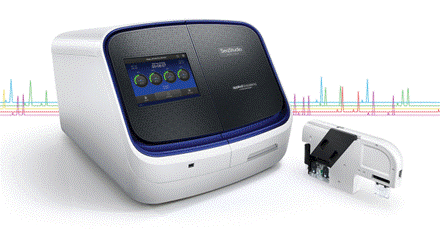DNA contains the blueprint of life, and codes for the molecular machineries that affect all the biological systems that create and maintains life. Reading the sequence of DNA is useful in understanding the structure and function of the cellular machineries, and elucidating the causes of diseases and response to treatments. We use multiple technologies to read the DNA sequence, and provide the most accurate information to help with diseases diagnosis and treatment, or research.
1) Next Generation Sequencing (NGS), a technology that enables sequencing of thousands of millions of DNA molecules simultaneously.

Genelabs utilizes the NGS workflow of the Genestudio S5 NGS system launched by ThermoFisher Scientific (USA), offers speed, accuracy, and flexibility for different gene panels, tailored to research or disease areas of interest. The Genestudio S5 uses the Ion Torrent technology that has been referenced in over 4,000 publications to date.
2) Capillary electrophoresis/Sanger sequencing

Also called the chain termination method, Sanger sequencing is a “first-generation” DNA sequencing method. Despite the advantages of next-generation sequencing techniques, where throughput is orders of magnitude higher, Sanger sequencing retains an essential place in clinical genomics and research. Genelabs houses a Seqstudio genetic analyzer, which is a fast and low-throughput Sanger sequencing and fragment analysis system manufactured by ThermoFisher Scientific (USA).
3) PCR and Real-time PCR machines

PCR machines are the most basic component of any genetic lab, and Genelabs utilizes multiple PCR machines including Quantsudio S5 from Applied Biosystems (USA).